How does Enviromat sedum survive on so little water?
Years of research and development have gone into making Enviromat sedum a remarkably versatile and drought tolerant product. Our specially formulated substrate, or growing material, keeps the plants healthy by retaining moisture without letting the roots get soggy. There’s enough substrate for the plants to survive indefinitely. It contains no organic material whatsoever, so it won’t rot away or need topping up.
The plants….
The plants themselves are specially chosen members of the sedum plant family. They’re all happy to grow and flourish in the British climate and some of the species are native to this country. Sedums were chosen because they have an amazing ability to survive where other plants struggle. But how do they do it? Why is it that sedums seem to thrive where the soil is thin ? How do they survive even when the weather is hot and dry and other plants are wilting all around them?
The reason that sedum plants – and their cousins from the Crassulacea (pronounced crass-you-lay-see) family are so good at resisting drought, is that they have developed a survival mechanism, known to scientists as Crassulacean Acidic Metabolism or CAM.
Take a look at sedum plants and trays
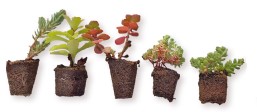 |
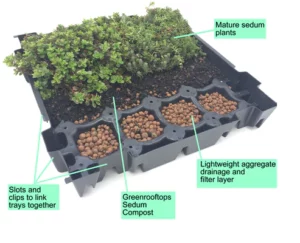 |
|
 |
 |
Crassulacean Acidic Metabolism
In simple terms, CAM is the plants’ way of making sure that as little water as possible escapes through their pores leaves and stems. It does that by effectively “holding its breath” all through the heat of the day and only opening its pores at night. The air is cooler and the water stored within the body of the plant is less likely to evaporate away.
If we compare CAM plants like sedums to plants that don’t have this special adaptation – lettuces for example, we can see how Enviromat tolerates drought for longer. This is why our ancestors thought so highly of these special plants.
Photosynthesis…sedum so little water
All green plants use a process called photosynthesis (pronounced foto-sin-the-sis) to make food from carbon dioxide gas, water and sunlight. The by-product of this process is oxygen, which is why, without plants, our planet would be uninhabitable – but that’s another story.
Photosynthesis can only happen during the day, as the chemical reaction inside the leaf cannot happen without sunlight. The other ingredients for the reaction are water and carbon dioxide. Carbon dioxide is all around us as one of the gases in air. The plant absorbs this gas through pores in the leaf surface which are known as stomata (stoma is the Greek word for “mouth” or “opening”). But, when the stomata are open to let carbon dioxide in, they also let water vapour escape. When the soil is dry, the plant can’t replace this water and it will wilt and die. But not if it is a CAM plant…
CAM stands for Crassulacean Acidic Metabolism. “Crassulacean” after the plant family it was first discovered in; and “Acidic Metabolism” describes what is happening inside the plant.
CAM plants keep their stomata closed during daylight hours so that water vapour doesn’t escape in the heat of the day. Instead, they open their stomata at night, take in the carbon dioxide and store it in the form of malic acid. In daylight, they turn the malic acid back into carbon dioxide and use it for photosynthesis. That’s how they survive for so long in arid conditions. It’s also why sedum plants taste bitter first thing in the morning and not quite so nasty by the afternoon.
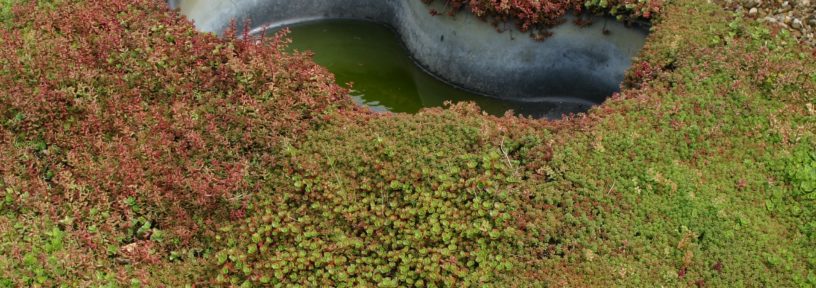
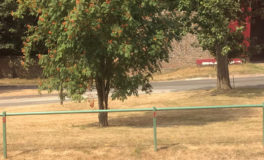 How to help your lawn recover from a drought
How to help your lawn recover from a drought 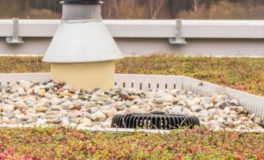 Sedum Species
Sedum Species 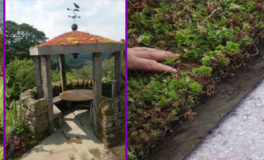 Sedum roof construction
Sedum roof construction 

